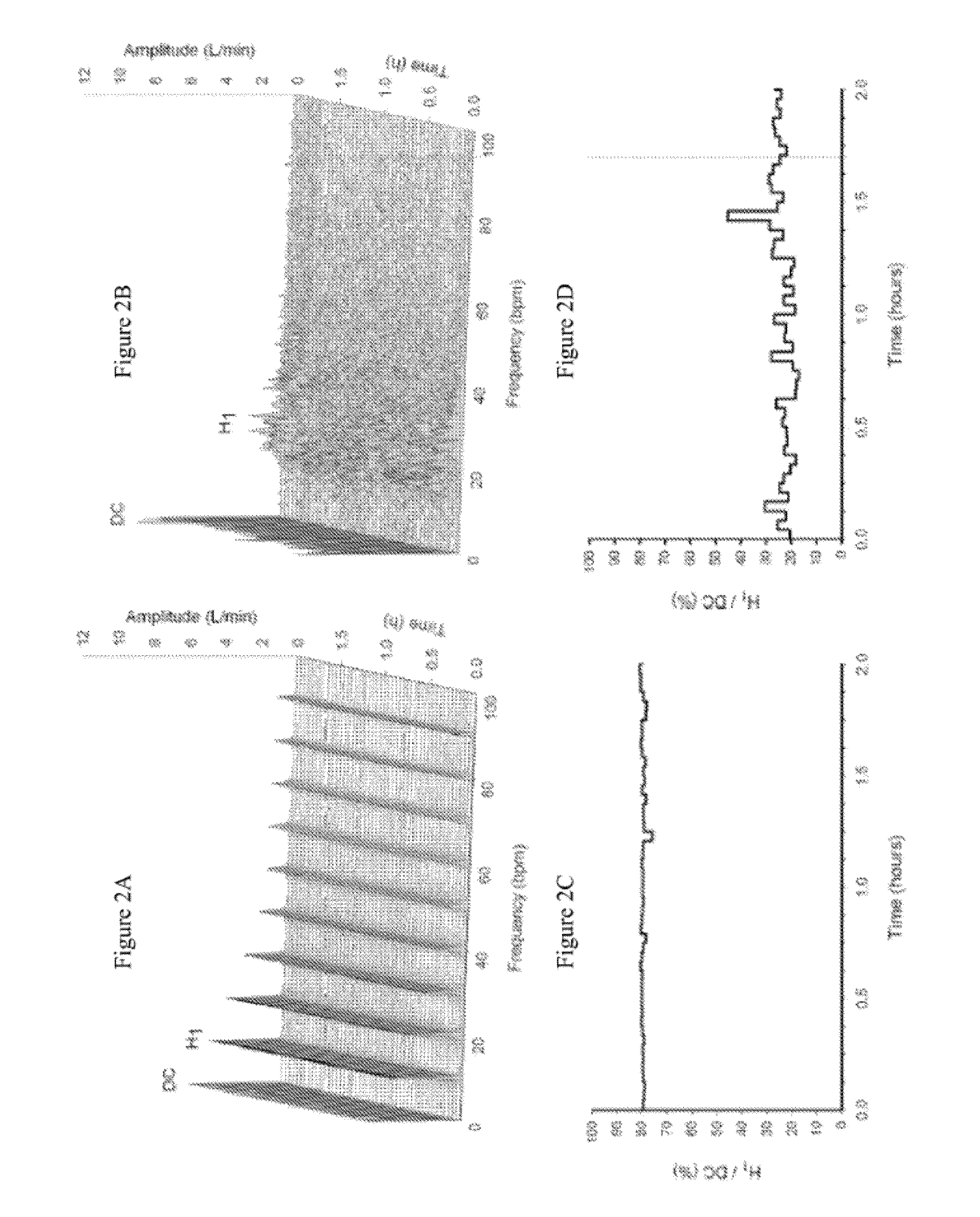Method and system to detect respiratory asynchrony
a technology of respiratory asynchrony and detection method, which is applied in the field of respiratory asynchrony detection method and system, can solve the problems of poor synchronized patients, poor patient safety, and inability to detect respiratory muscle fatigue, and achieves the obvious disadvantage of being invasive and not well tolerated by many patients
- Summary
- Abstract
- Description
- Claims
- Application Information
AI Technical Summary
Benefits of technology
Problems solved by technology
Method used
Image
Examples
Embodiment Construction
[0025]FIG. 1 is a schematic block diagram of an embodiment of a system for detecting respiratory asynchrony in accordance with the present invention. Referring to FIG. 1, in an exemplary embodiment, a patient 10 is coupled to a ventilator 20 via, for example, one or more flexible tubes or hoses 25 (not shown, but represented by the logical arrows between elements 10, 40, 50, and 20. A data acquisition system 30 acquires data such as air flow data from air flow sensor 40, air pressure d.ata from pressure sensor 50, and / or data from any other data source (e.g., sensor) such as respiratory monitor 85, or optional intensive care unit 80. Preferably such other data sources or sensors are capable of sensing any periodic signal produced by breathing, for example, motion of the chest and abdomen or air temperature changes measured with a thermistor. As shown in the illustrative embodiment of FIG. 1, the air flow sensor 40 senses the air flow provided to patient 10 via hose 25. Also as shown...
PUM
 Login to View More
Login to View More Abstract
Description
Claims
Application Information
 Login to View More
Login to View More - R&D
- Intellectual Property
- Life Sciences
- Materials
- Tech Scout
- Unparalleled Data Quality
- Higher Quality Content
- 60% Fewer Hallucinations
Browse by: Latest US Patents, China's latest patents, Technical Efficacy Thesaurus, Application Domain, Technology Topic, Popular Technical Reports.
© 2025 PatSnap. All rights reserved.Legal|Privacy policy|Modern Slavery Act Transparency Statement|Sitemap|About US| Contact US: help@patsnap.com



